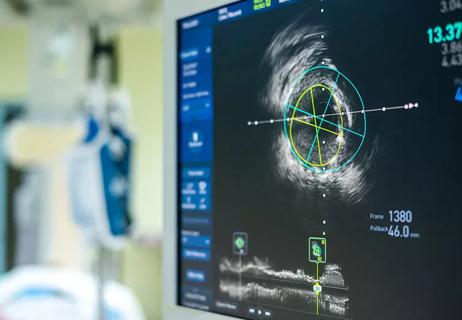Stroke in children is more common than you think

What do you think is more common in children: brain tumors or stroke?
Advertisement
Cleveland Clinic is a non-profit academic medical center. Advertising on our site helps support our mission. We do not endorse non-Cleveland Clinic products or services. Policy
If you guessed brain tumors, you’re not alone. That’s the answer pediatric neurologist Neil Friedman, MBChB received when he asked the same question in a room full of healthcare professionals. In reality, stroke is about twice as common in children as brain tumors.
“There are huge disparities in what people know about stroke in children,” Dr. Friedman says. With that in mind, he offers five facts you may not know — but probably should.
Stroke is one of the top 10 causes of death in children, even though most people don’t know much about it. There are 4,000 to 5,000 strokes per year in children.
The risk is highest during the first year. “In the early newborn period, it really approaches the levels you see in older adults,” Dr. Friedman says. In fact, 40 percent of childhood strokes occur in the first year, although the rest occur in children of many different age groups. Boys and African-American children have the highest risk, but the reasons are not entirely clear.
Stroke in children can be caused by heart issues such as congenital heart disease, a tear in the blood vessels in the brain, the rare vascular condition Moya Moya disease and clotting disorders, among other causes.
In Moyamoya disease, for example, the arteries supplying blood to the brain become progressively narrower over time. A child’s body will form new blood vessels to try to compensate, but when that is not enough, a stroke may occur.
Advertisement
About half of children who survive a stroke develop cognitive or motor impairments. They may have problems with motor skills, visual impairment, a lower-than-average IQ, and even seizures or epilepsy.
These effects are part of why Dr. Friedman and others are pushing for better understanding of childhood stroke — and earlier diagnosis. Fortunately, a child’s ability to recover from stroke is much better than that of an adult.
Since earlier diagnosis and treatment are critical, it’s important to know the signs of childhood stroke.
Symptoms include weakness in an arm or leg on one side of the body, difficulty speaking or understanding speech, visual disturbances, problems walking or moving and severe headaches.
“These are not your average headaches,” Dr. Friedman says. “They’re the worst headaches of your life, and they get progressively worse.” He also notes that symptoms will vary by where in the brain a stroke occurs, and they may come and go.
Diagnosis can be tricky because of other conditions that mimic the symptoms: certain types of migraine, for example. Seizures often occur for reasons other than stroke. Still, if you suspect a stroke, seek medical attention immediately. Early treatment is crucial.
The goal of treating a stroke is to preserve as much healthy brain tissue as possible.
Doctors may prescribe blood thinners or anticoagulation medicines that keep the blood flowing to the brain. “Clot busters” such as the drug tPA are not yet approved to treat strokes, but Cleveland Clinic is part of a phase 1 study designed to see how safe these drugs might be for future use. In addition, experts can monitor and treat seizures, and children often recover their motor skills in less severe strokes.
For Dr. Friedman, it all boils down to raising awareness so that kids can get the attention they need right away.
“Studies have shown that the average time from onset of symptoms to medical contact is about 28 hours,” Dr. Friedman says. “We have to reduce that.”
Advertisement
Learn more about our editorial process.
Advertisement

Most recommended precautions center around minimizing bruising or swelling

Even one drink can have an impact on your cognitive function leading to slurred speech, blurred vision and impaired memory

Understand who may (and may not) benefit

Lorem ipsum dolor sit amet. Et odio Quis vel ipsam omnis eum alias deleniti et placeat impedit non voluptas galisum hic autem enim et cupiditate aliquid. Est beatae quidem non facilis autem ut commodi nisi aut tempore rerum et dolores voluptatem cum enim optio id sapiente quasi. Ad laboriosam officiis 33 cupiditate sequi ea voluptatum consectetur qui necessitatibus voluptate et quasi doloremque et facere explicabo quo explicabo officia

Seeking help through therapy can be an important step in improving your quality of life when you have UC

Type 2 diabetes isn’t inevitable with these dietary changes

Applying a hot or cold compress can help with pain